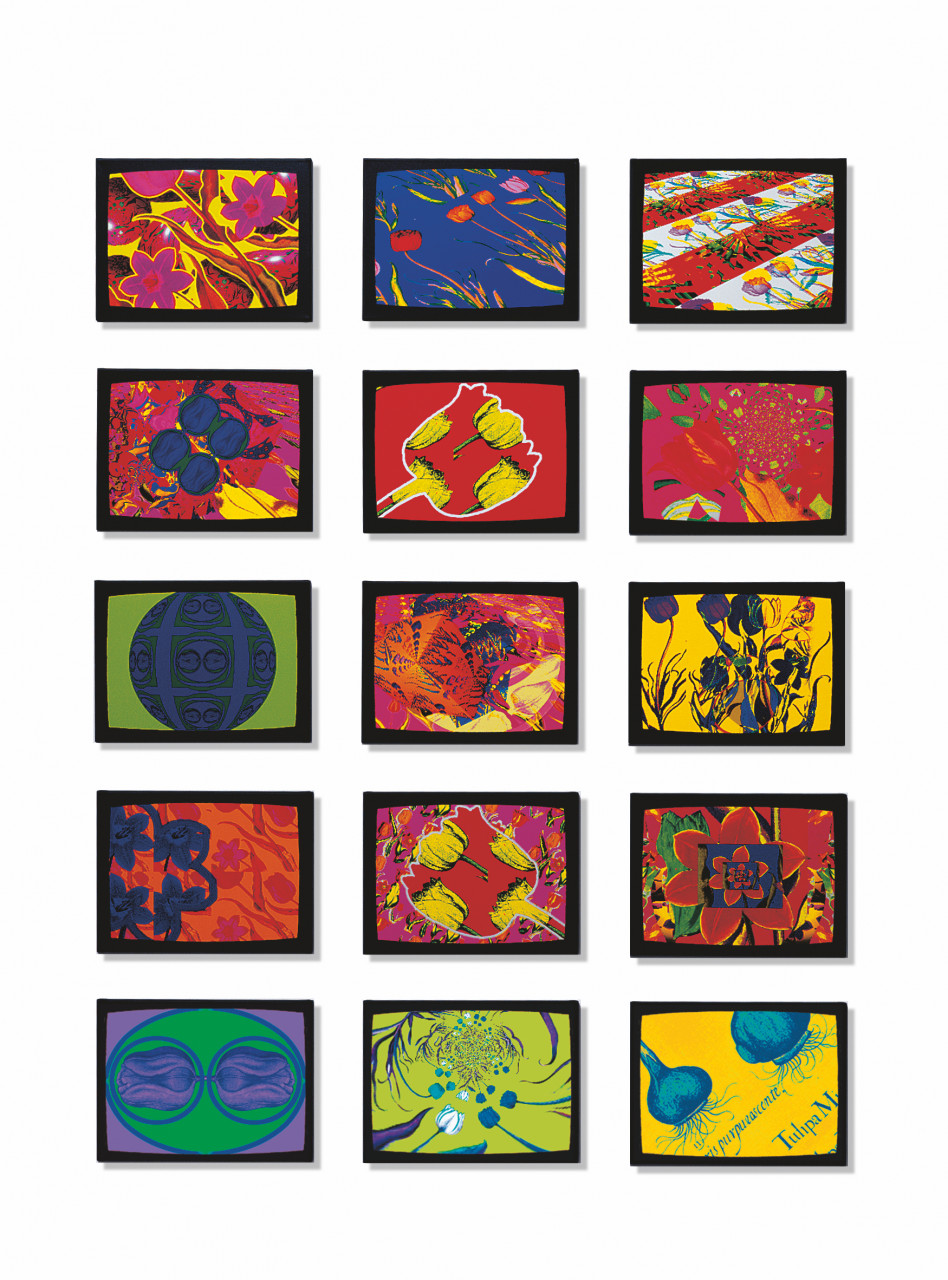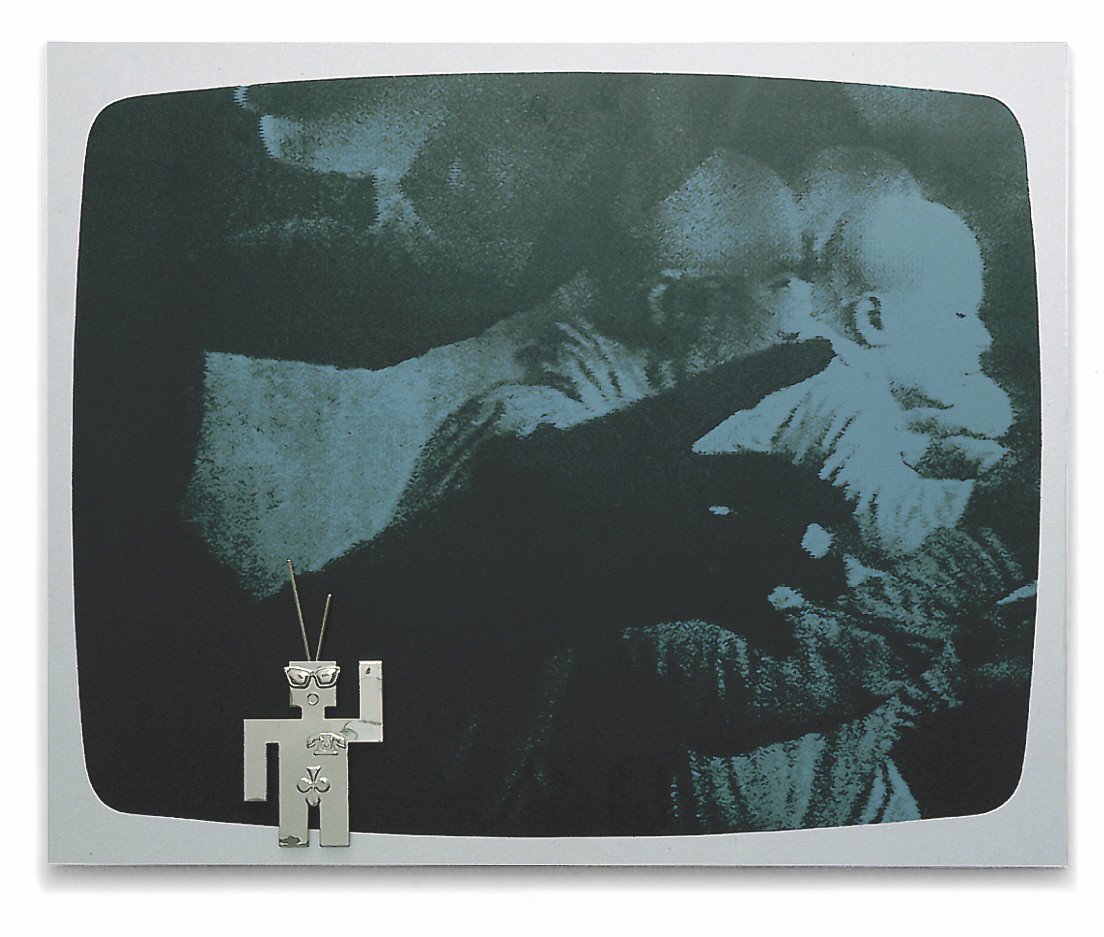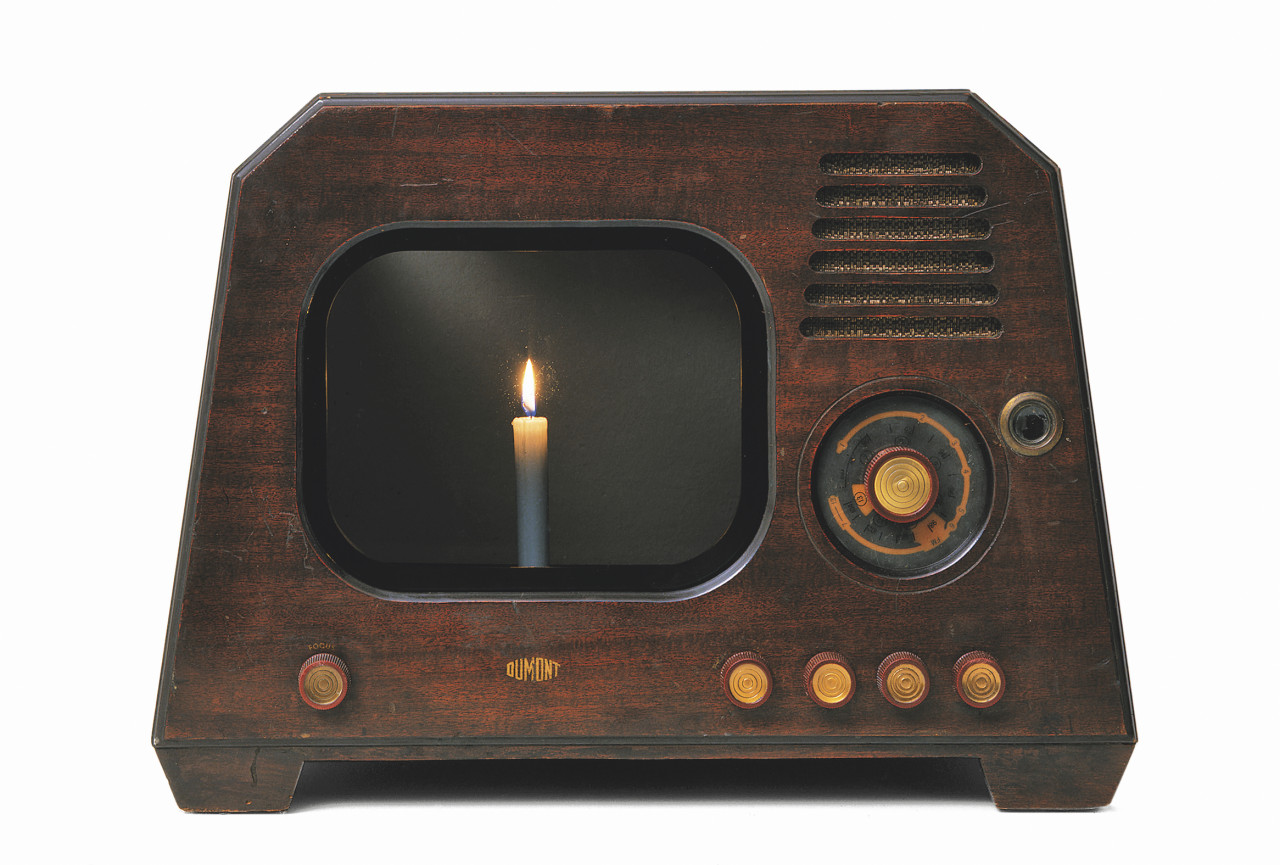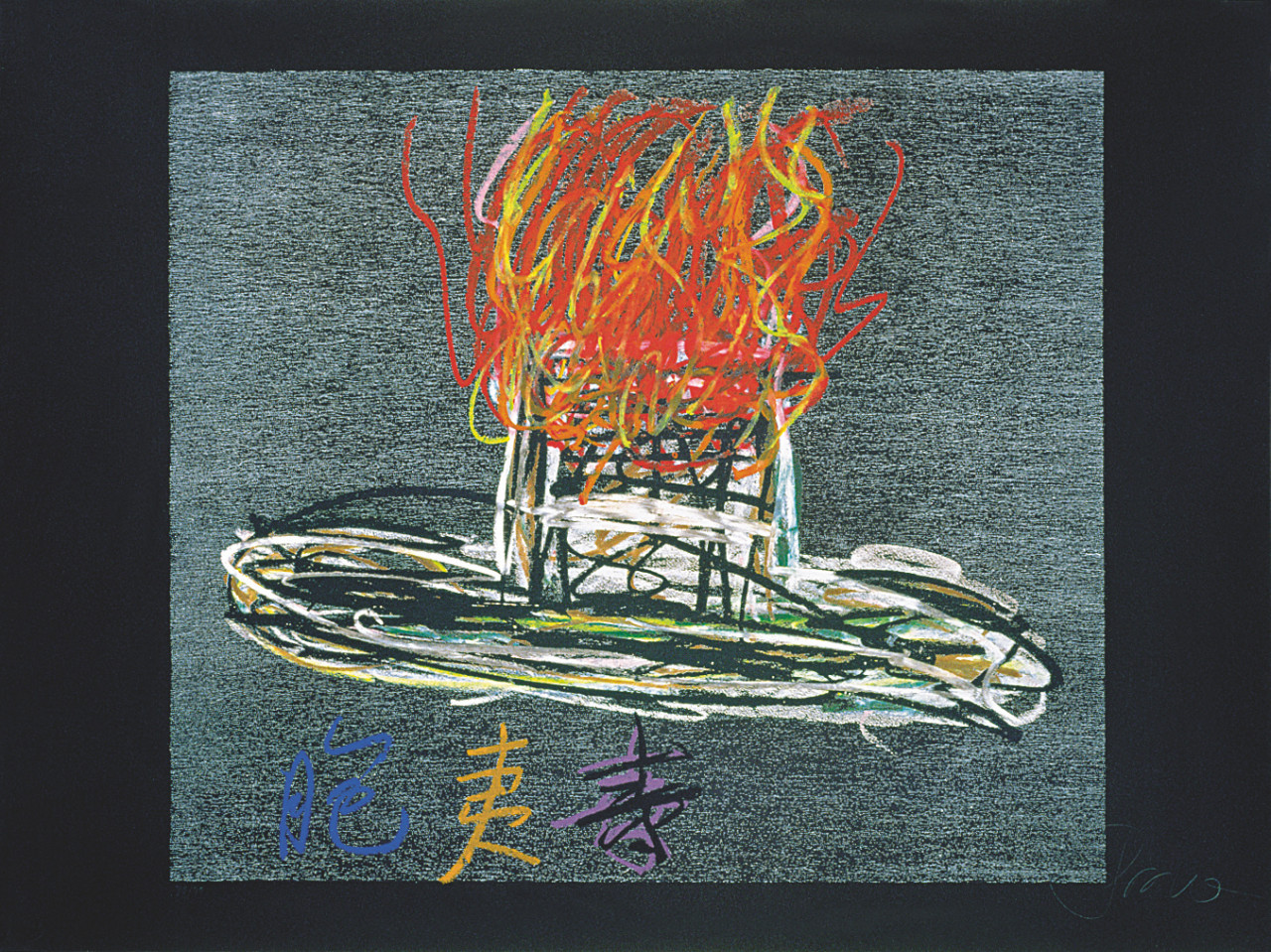Nam June Paik
Nam June Paik (1932-2006), born in Seoul, South Korea, lived and worked in New York. Nam June Paik worked in many mediums – including sculpture, performance, music and television – and is a pioneer in the field of video art. Paik was based in New York but realized his projects and video installations globally. Spectacular works like the worldwide satellite broadcast of Good Morning Mr. Orwell on New Year's Eve 1984 and The more the better, a tower made of over a thousand monitors for the Seoul Olympics in 1988, have made Paik world-renowned, and show his unmistakable knack for taking advantage of the opportunities afforded by new electronic media and their significance for global civilization.
Nam June Paik Editions
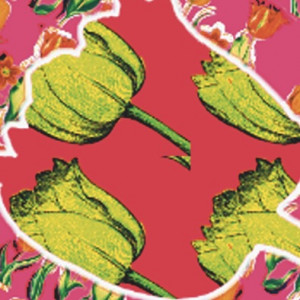
TV-Tulips
2000
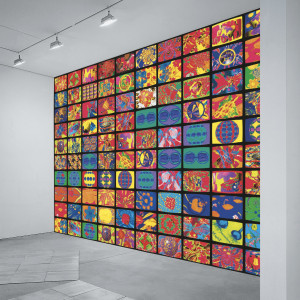
Computerized One Hundred Flowers
1998
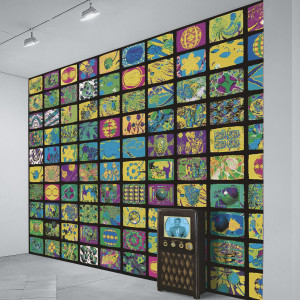
TV Tulips (Computerized One Hundred Flowers)
1998
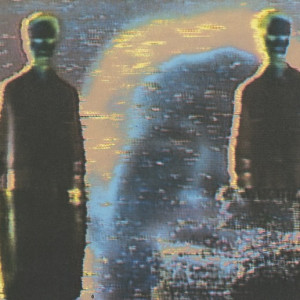
Triangle, Trinity
1998
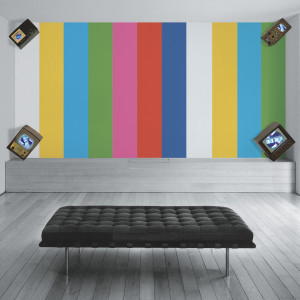
I Never Read Wittgenstein
1998
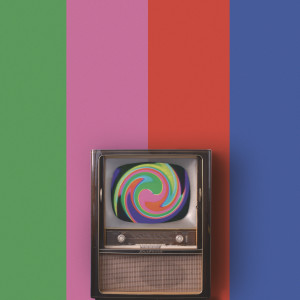
I Never Read Wittgenstein (I Will Never Understand Wittgenstein)
1997
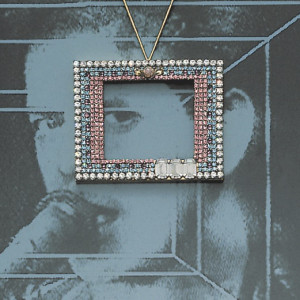
Video Sonata op. 56
1995
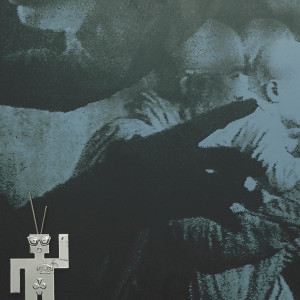
Video Sonata op. 57
1995
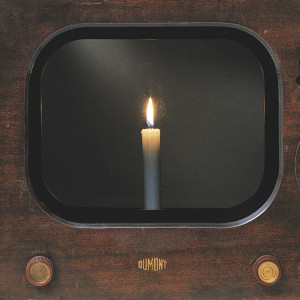
Before the Word There Was Light, After the Word There Will be Light
1992
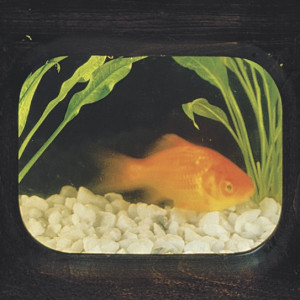
Sonatine for Goldfish
1992
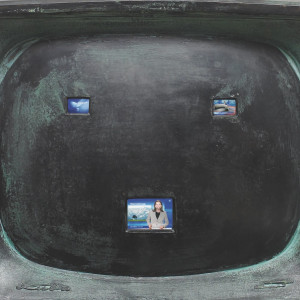
Born Again
1991
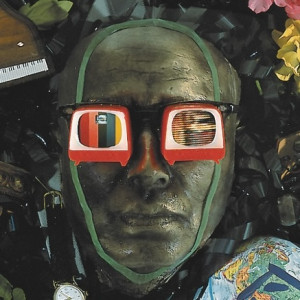
Self Portrait
1989
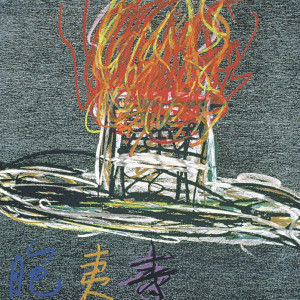
Burning Hat
1986/1987
TV-Tulips
2000
Inkjet on canvas, mounted on a stretcher, each 33 x 44 x 2 cm (12½ x 17¼ x ¾ in). Edition of 100 unique pieces, signed.
In this unique edition series, Nam June Paik playfully merges technology with nature into vibrant compositions. Each work features stylized, digitally manipulated floral motifs – primarily tulips – rendered in saturated, vivid colors reminiscent of television screens and video art aesthetics. Echoing Paik’s pioneering use of media and his fascination with the fusion of organic and electronic imagery, these works transform the tulip into a recurring symbol of aesthetic beauty filtered through a technological lens. Printed on stretched canvas, each TV Tulips composition – and framed like a television screen – stands as a one-of-a-kind digital painting, combining Pop sensibility with Paik’s signature wit and commentary on media culture.
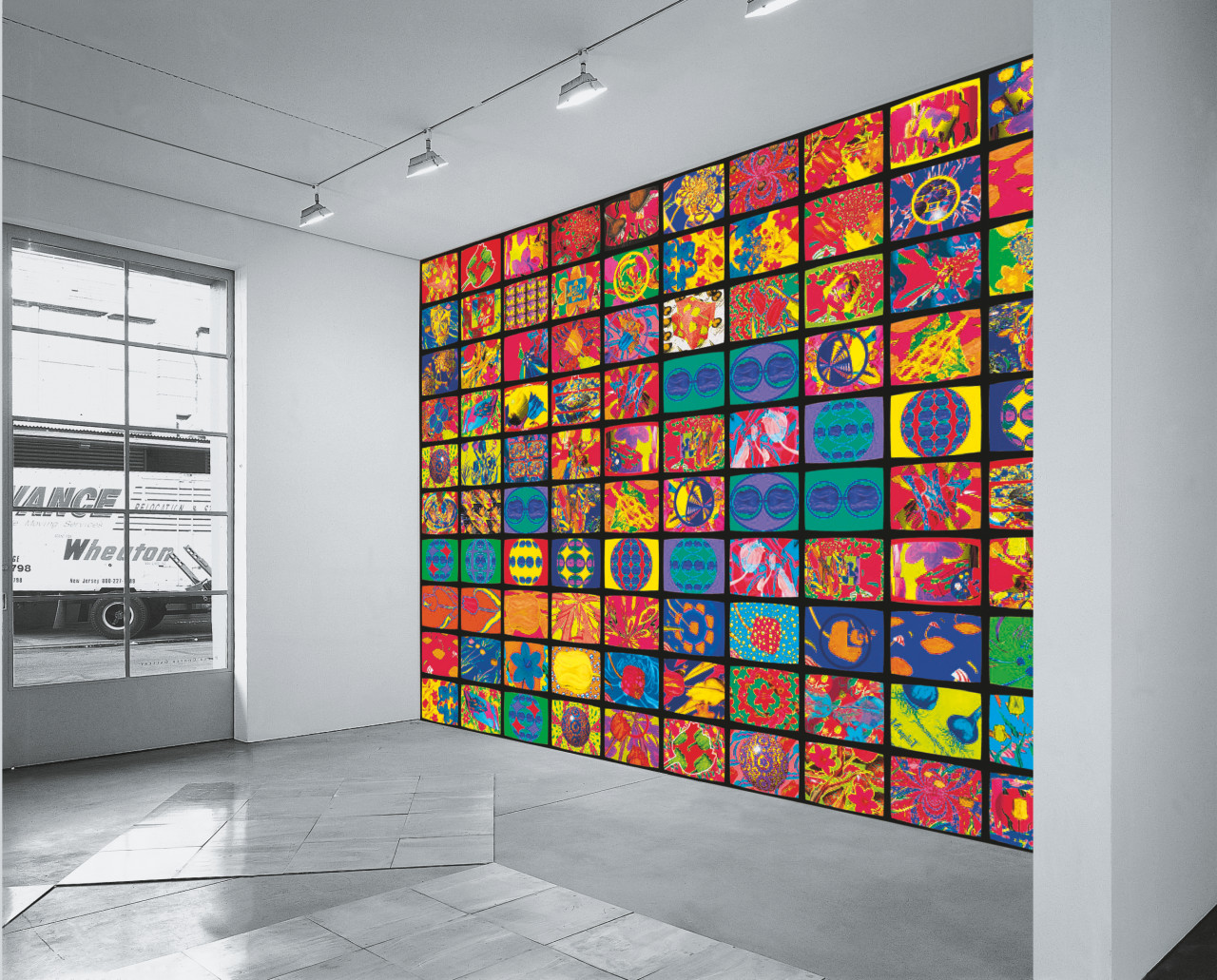
Computerized One Hundred Flowers
1998
From Wall Works
Computer-generated wallpaper (100 different images) on rolls pasted to the wall, images 32 x 42 cm (12½ x 16½ in) each, installation size according to the wall. Limited to 20 installations, each with prints in a different color range, with a signed and numbered certificate.
To install this large-scale edition by Nam June Paik, as many prints as are necessary to cover the entire wall are to be affixed in rows and random order. If necessary, the prints may be cropped.
This installation is one of two Computerized One Hundred Flowers works Paik created for the Wall Works project. The other one additionally includes an antique wooden TV console, which is to be placed in front of the wallpapered wall. Both works are part of the collection of the Neue Nationalgalerie Berlin.
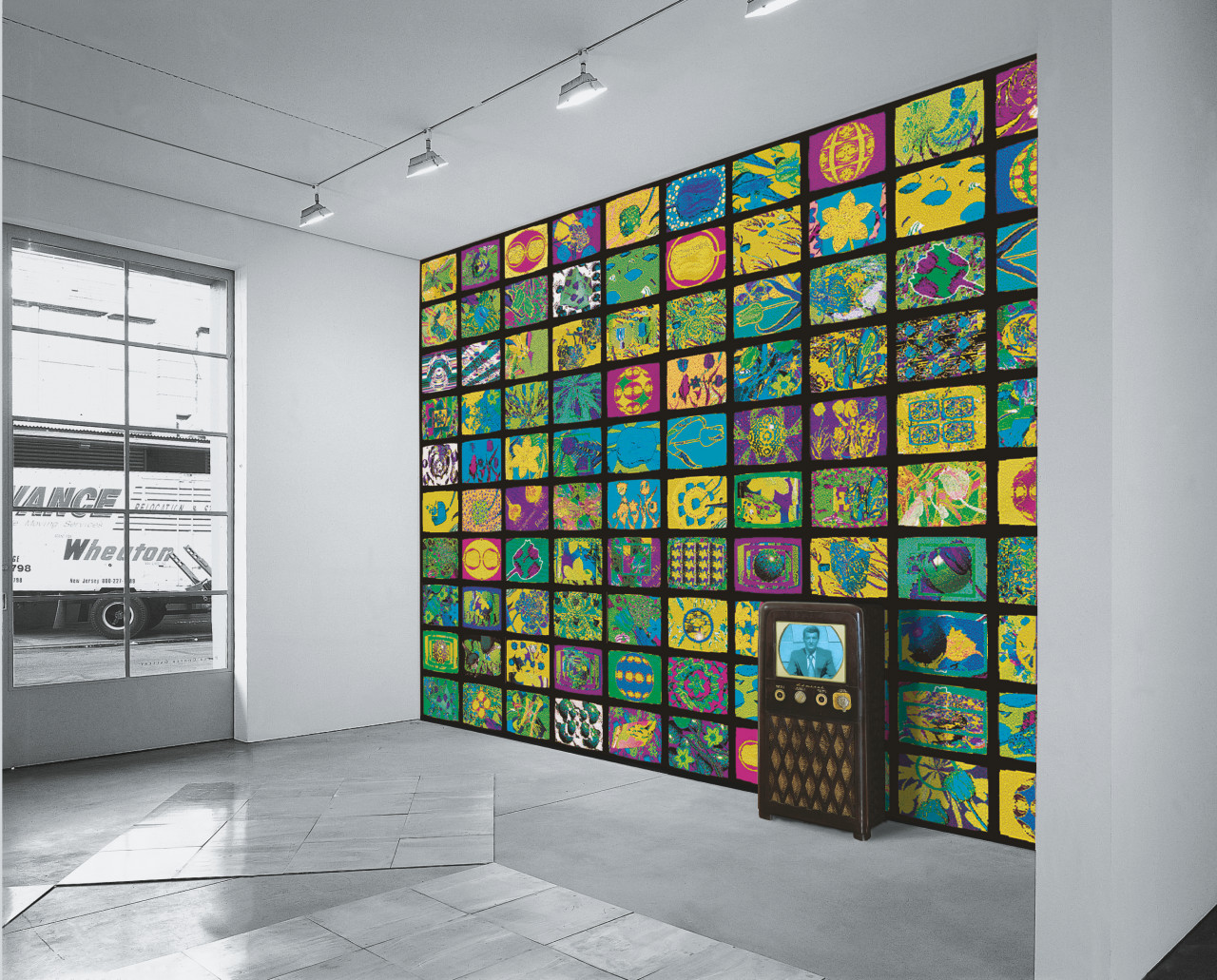
TV Tulips (Computerized One Hundred Flowers)
1998
From Wall Works
Inkjet prints, 100 different images, 32 x 42 cm (12½ x 16½ in) each, on paper rolls, affixed to the wall, and antique television console. TVs vary in model and dimensions, installation size according to the wall. Limited to 15 installations, with a signed and numbered certificate.
This large-scale edition is one of two related works Nam June Paik created for the Wall Works project. Both installations require for a wall to be fully covered in the artist’s computer-generated prints, affixed in rows and random sequence. This work additionally includes an antique wooden TV console, which is to be placed in front of the wallpapered wall and tuned to any broadcast channel.
Both works are part of the collection of the Neue Nationalgalerie Berlin.
Triangle, Trinity
1998
From Sequences
Three mixed media prints (silkscreen and offset), two of them (A and C) with collage, all on Rives rag paper. Each print 40 x 50 cm (15¾ x 19¾ in), each signed and numbered. Edition: 60 + X.
This edition by Nam June Paik reflects the artist’s continued exploration of television imagery, digital manipulation, and media culture. All three compositions feature glitch-like backgrounds – A and C with juxtaposing sharply defined television screen inserts and print B with two silhouetted figures. The triptych format suggests a visual or conceptual triangulation, alluded to in the title. As with much of his work, Triangle, Trinity merges the aesthetic of early video art with poetic reflections on human presence within the media-saturated landscape.
This work is in the collection of the Brooklyn Museum, New York.
Set EUR 2,500
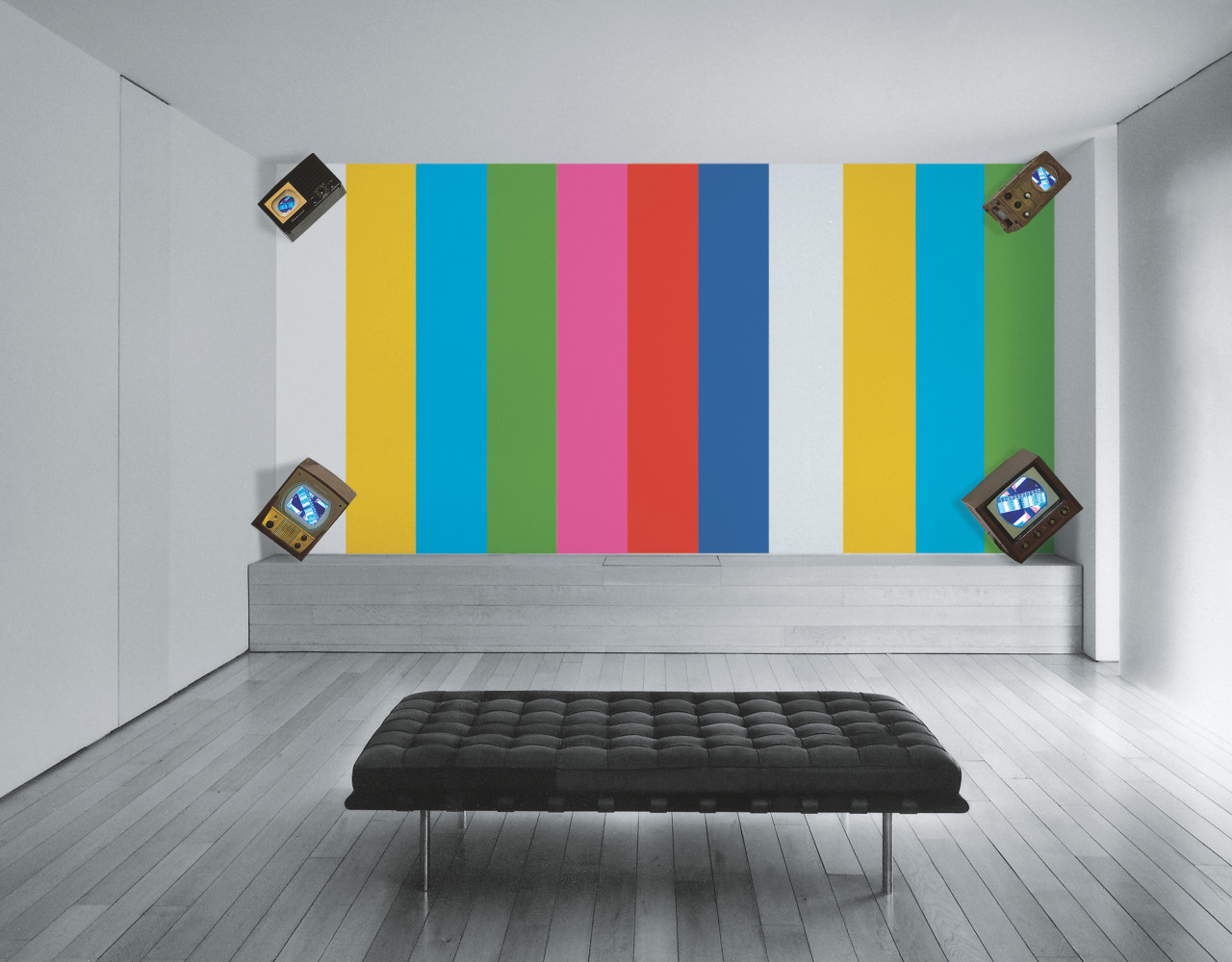
I Never Read Wittgenstein
1998
From Wall Works
Wall painting in seven colors with four televisions (casings from the 30s to 50s) playing the video Color Bar Theme and Variations. Televisions vary in model and size; installation size according to the wall. Edition limited to 12 installations, with a signed and numbered certificate.
For this edition, Nam June Paik created a dedicated video composition, which is to be played in asynchronous sequence on the four televisions installed in the four corners of the wall. The antique television casings suggest a history of television, and their configuration implies the four corners of the earth. The wall itself is painted in colored vertical stripes, which are based on the SMPTE color bars used to test US color television.
This is one of two related works Paik created for the Wall Works project (the other one features only one antique TV console); both are part of the collection of the Neue Nationalgalerie Berlin.
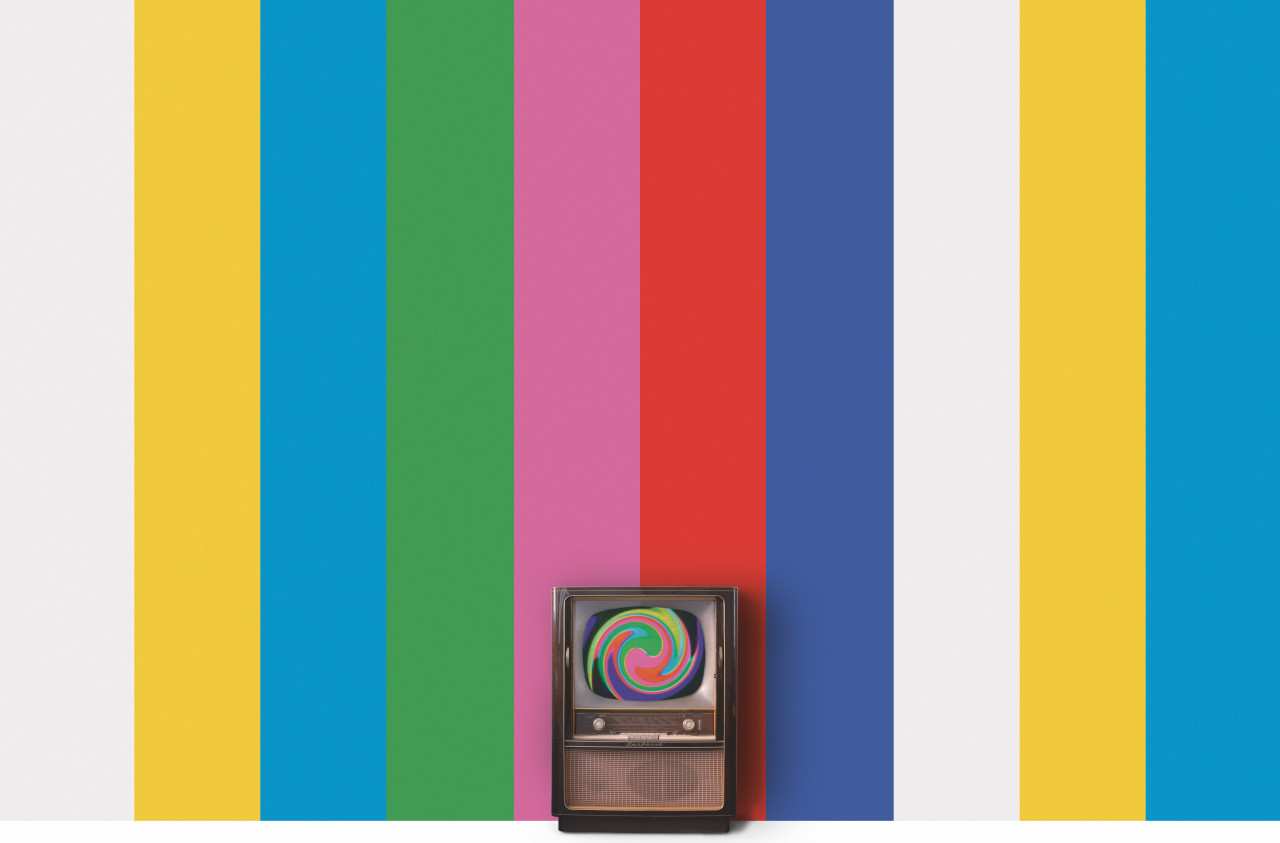
I Never Read Wittgenstein (I Will Never Understand Wittgenstein)
1997
From Wall Works
Wall painting in seven colors with an antique German TV playing the video Color Bar Theme and Variations. TV set varies in model within the edition, installation size according to the wall. Limited to 15 installations, with a signed and numbered certificate.
In this edition, Nam June Paik's video composition plays inside a single antique TV console placed on the floor in front of the chosen wall. The wall itself is painted in colored vertical stripes, which are based on the SMPTE color bars used to test US color television. This is one of two related works Paik created for the Wall Works project (the other one features four antique TV consoles, mounted on each of the four corners of the wall); both are part of the collection of the Neue Nationalgalerie Berlin.
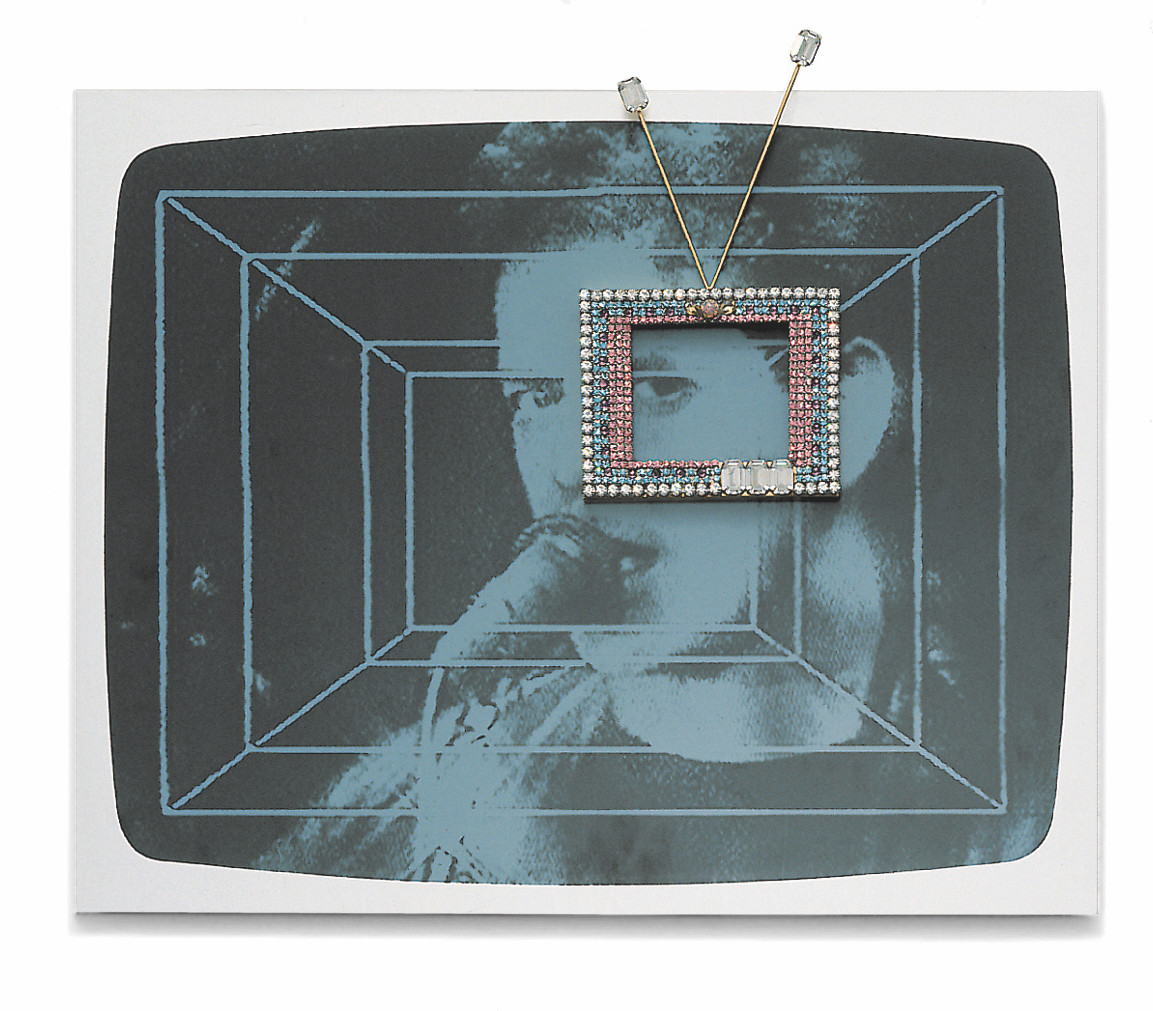
Video Sonata op. 56
1995
(still of Lou Reed from video Bye Bye, Kipling)
Silkscreen on aluminum, brass, rhinestones, 45 x 56 x 3 cm. Edition of 40, signed and numbered.
Nam June Paik’s edition featuring a still of Lou Reed exemplifies his pioneering approach to media, pop culture, and global connectivity. In this work, Paik silkscreened an image from his 1987 video Bye Bye, Kipling – part of his visionary satellite project series – onto aluminum. These broadcasts connected Seoul, New York, and Tokyo in real time, challenging the idea that East and West are destined to remain disconnected and instead celebrating the simultaneity of global experience. Mounted atop the printed image is a small TV frame encrusted with rhinestones and antennae, evoking both glamour and media spectacle. This jewel-like object functions as a miniature screen, playfully reframing Lou Reed's likeness while reinforcing Paik’s lifelong fascination with television as both medium and icon.
Video Sonata op. 57
1995
(still of Sankai Juku Performance Group from video Bye Bye Kipling)
Silkscreen, on aluminum, stainless steel, 45 x 56 x 2 cm (17¾ x 22 x ¾ in). Edition of 40, signed, numbered.
In this edition, Nam June Paik centers a still from a performance by the Japanese butoh group Sankai Juku, featured in his 1987 video Bye Bye, Kipling. The image is silkscreened onto an aluminum plate, giving the work both material weight and a cool, media-like surface. Bye Bye, Kipling was part of Paik’s groundbreaking satellite project series that connected Seoul, New York, and Tokyo in real time – challenging East-West divisions and celebrating the simultaneity of global culture through live video transmission. Affixed to the lower edge of the image is a small, cartoon-like figure made of stainless steel, complete with engraved details and antennae – part robot, part icon. The playful character anchors the composition with Paik’s signature wit, while symbolizing both the human and mechanical actors that define the media age.
Before the Word There Was Light, After the Word There Will be Light
1992
TV casing (DuMont, 1948), with wax candle, 44 x 60 x 50 cm (17 x 23½ x 20 in). Edition of 18, signed and numbered on label.
Nam June Paik’s 1992 edition Before the Word There Was Light, After the Word There Will Be Light poetically merges ancient symbolism with modern technology. At its center is a 1948 DuMont television casing, hollowed out and repurposed to house a single lit candle – a humble source of illumination in stark contrast to the electronic glow traditionally associated with the screen. Paik transforms the TV, once a vessel of mass communication, into a quiet, contemplative object. The title suggests a cyclical return to elemental light –before and beyond language, media, and machines – underscoring Paik’s ability to fuse spirituality, technology, and time in a single, resonant gesture.
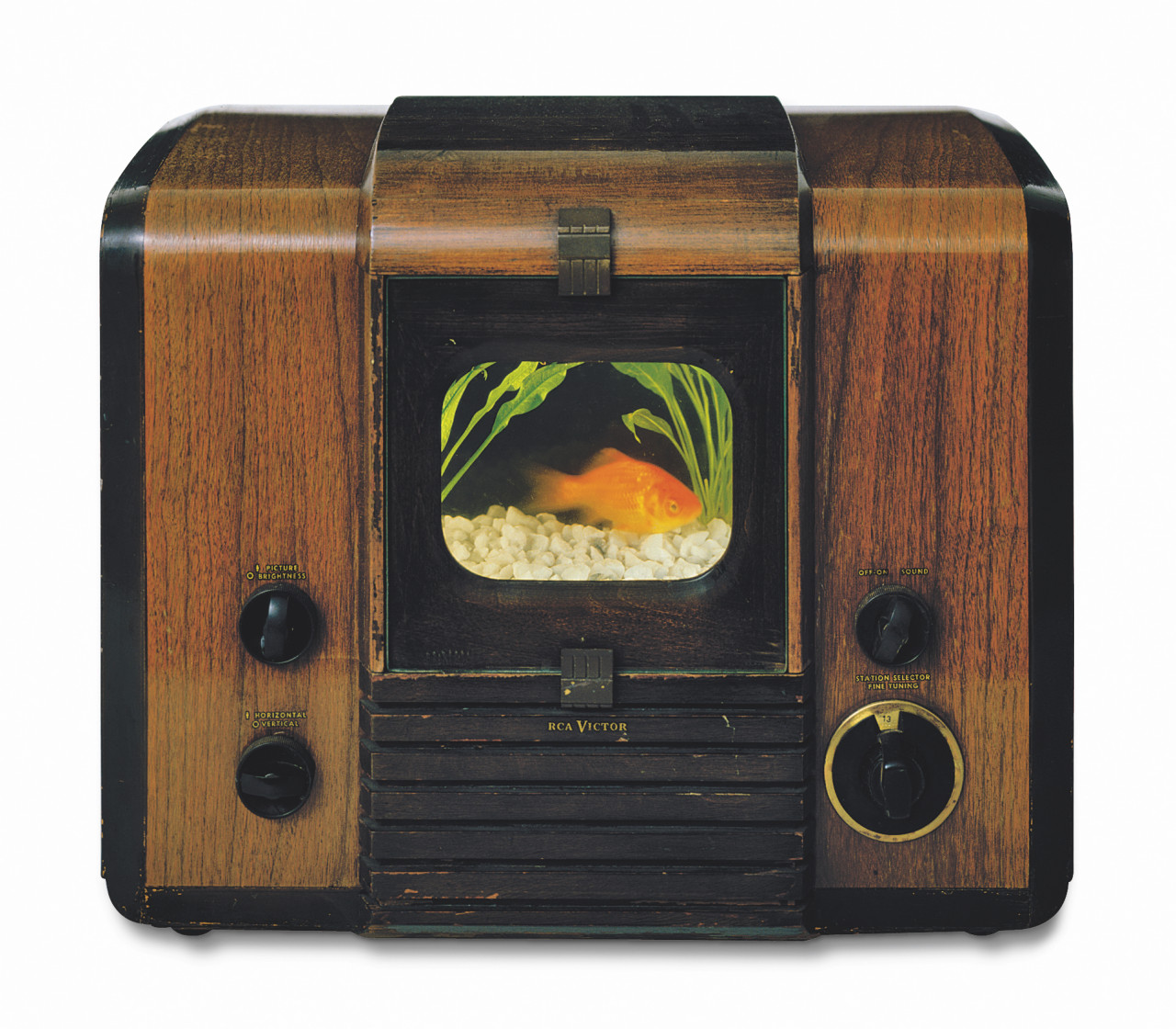
Sonatine for Goldfish
1992
Television casing (RCA Victor, 1946), with aquarium, 40 x 49 x 41 cm. Edition: 12, signed and numbered on label on piece.
For this 1992 edition, Nam June Paik transformed a vintage RCA Victor television set from 1946 into a living sculpture. By hollowing out the wooden casing and installing an aquarium inside, Paik replaces the flickering light of broadcast with the quiet, hypnotic movement of a goldfish. The piece playfully subverts the function of the television, turning a once-modern tool of mass communication into a meditative, self-contained biosphere. With characteristic wit and poetry, Paik contrasts the artificiality of media with the organic rhythm of life, drawing attention to the tension – and harmony – between nature and technology. Sonatine for Goldfish is both humorous and deeply reflective, a small-scale masterpiece of conceptual transformation.
Born Again
1991
Bronze, patinated, with three TV monitors, antennas, plug, 48 x 59 x 15 cm (19 x 23 x 6 in). Edition of 24, signed and numbered on label.
Nam June Paik’s edition Born Again is a sculptural relic cast in bronze from an old Kuba television set – the very model used in a seminal 1963 Fluxus happening at Galerie Parnass in Wuppertal, Germany. By immortalizing the TV set in bronze, Paik transforms a once-ephemeral performance object into a lasting monument, bridging past and present. The work takes on a new life – “reborn” – with its subtly anthropomorphic face: two small video screens for eyes and a third screen as a mouth, embedded into the patinated surface. At once humorous and reverent, Born Again revisits the radical spirit of Fluxus while incorporating fragments of contemporary media, giving a technological icon both a face and a future.
Self Portrait
1989
1950s Philco Predicta television containing bronze mask of the artist, video tape, antique TV cubes and circuit board, eggs, painted globe, watch, suspenders, pewter Buddha, magnet, painted toy piano, I-Ching page, silk flowers, eyeglasses. 61 x 68.5 x 40.5 cm. Edition: 12, signed and numbered with brush on top of object.
Nam June Paik’s Self-Portrait edition is a vibrant, autobiographical assemblage that transforms a 1950s Philco Predicta television into a densely layered shrine of personal and cultural symbolism. At its center is a bronze cast of Paik’s own face, wearing brightly colored glasses with embedded miniature video screens – blurring the line between the artist and the media he both embraced and critiqued. Surrounding the mask are symbolic objects from East and West, high and low culture: from circuit boards and Buddha figures to toy instruments and silk flowers. As in much of Paik’s work, technology is not cold or distant – it is humanized, playful, and deeply personal. Self-Portrait becomes not just a literal portrait of the artist, but a portrait of media consciousness itself: fragmented, global, and alive with humor, memory, and critique.
Burning Hat
1986/1987
From For Joseph Beuys
Silkscreen on black rag paper, 60 x 80 cm (23½ x 31¾ in). Edition of 90 + XXX + 10 A.P., signed and numbered.
Nam June Paik created this silkscreen edition as part of the group portfolio For Joseph Beuys, paying tribute to the influential German artist and fellow Fluxus member. Rendered in vivid reds and oranges, the print shows a fedora-style hat – Beuys’ iconic trademark – engulfed in flames. The image oscillates between homage and transformation, symbolizing Beuys’ radical legacy and his mythologized persona. With characteristic wit and symbolism, Paik turns the burning hat into a visual metaphor: for transmission, sacrifice, memory, and creative energy. The work reflects the close bond between the two artists, both of whom embraced performance, pedagogy, and the merging of art with life. Burning Hat becomes a poetic, visual eulogy – at once personal and universal.
EUR 1,750
